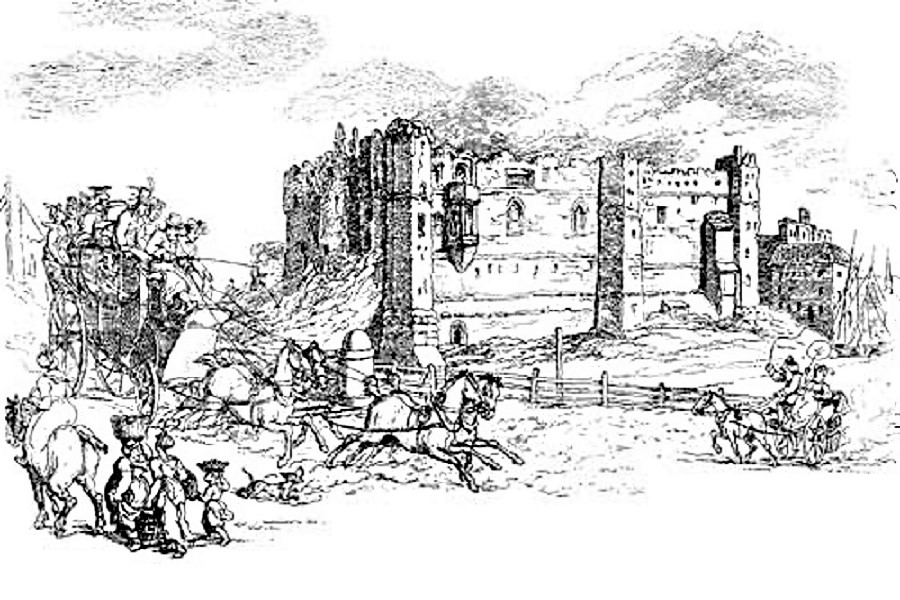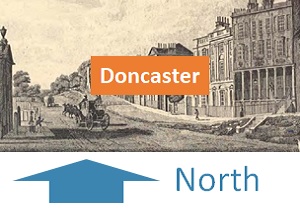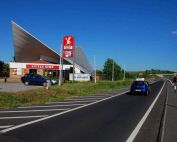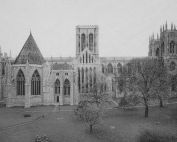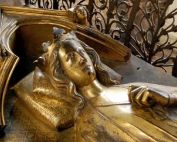Newark and the Great North Road
In Roman times the primary road from London to York was via Lincoln and a ferry crossing of the Humber.
During the early Medieval period some chose a more westerly route via Nottingham to make the river crossings more straightforward.
The first bridge over the River Trent at Newark came in the 12th century – encouraging the more direct route north.
Around 1770 the Great North Road around Newark was raised on a long series of arches to ensure it remained clear of the regular floods it experienced. This work cost £12,000 and followed a disastrous flood in 1766. This work complemented the new stone bridge built in 1775 to the design of Thomas Wright.
In the 1778 edition of Defoe’s Tour through Britain, the improvements feature in an editorial note:
“…the vast new-raised road from the castle over the flat often over-flowed by the Trent…whether we consider the greatness or the utility of the work it may be looked upon as one of the greatest of the kind ever executed in England”.
Newark became an important coaching town in the 18th and early 19th centuries with inns such as the Clinton Arms and Saracen’s Head in the Market Place supplying much needed rest and refreshment for travellers taking the fast mail coaches along the Great North Road between London and Edinburgh.
Dickens makes reference to Newark in Nicholas Nickleby (1838-39). It is in the context of the perils of long-distance coach travel in the days before railways.
As Nicholas Nickleby’s coach approaches from the south Dickens writes:
“The night and the snow came on together and dismal enough they were…
Nicholas, who had been asleep for a short time, was suddenly roused by a violent jerk which nearly threw him from his seat. Grasping the rail, he found that the coach had sunk greatly on one side, though it was still dragged forward by the horses; and while – confused by their plunging and the loud screams of the lady inside – he hesitated, for an instant, whether to jump off or not, the vehicle turned easily over, and relieved him from all further uncertainty by flinging him into the road.”
The Great North Road continued to pass through the centre of Newark until 1964 when the A1 bypass was opened, routing traffic to the east of the town.
About Newark
Newark dates back to Roman times lying on the Fosse Way from Exeter to Lincoln, close to the River Trent, and well connected north and south.
For many centuries it came under the influence of other more powerful towns and cities. In the 7th century it had been granted to the abbey of Peterborough by Wulfhere. By the 11th century it was controlled by Leofric, Earl of Mercia. By the 12th Century it was under the control of Lincoln cathedral.
The castle was completely rebuilt as a prominent stone structure by Alexander the Magnificent, a Bishop of Lincoln known for his ostentatious and luxurious lifestyle.
It was in late medieval times that Newark developed as an influential centre in its own right. This was in no small way linked to the building of a succession of bridges over the Trent displacing Nottingham as the most easterly crossing point. In 1457 a flood swept away the 12th century bridge. The Bishop of Lincoln, John Chadworth, financed a new oak bridge with stone defensive towers at either end.
The Crown became the major landowner in the area following exchange of land with the Bishop of Lincoln in 1547. Both James I and his son Charles visited Newark on a number of occasions. During the Civil Wars of the 17th century Newark was a determinedly royalist town, known as “The Key to the North”. It was subject to sieges, and conversely, Newark’s troops were involved in battles at Gainsborough and Naseby, and in raids on Nottingham and Melton.
Newark went on to become an important coaching town on the Great North Road.
Fine medieval buildings survive, including the 15th century front of the Old White Hart in the Market Place and the Governor’s house on Stodman Street.
Explore Newark
The images below provide links to additional information either on this website or elsewhere.
Newark Then and Now
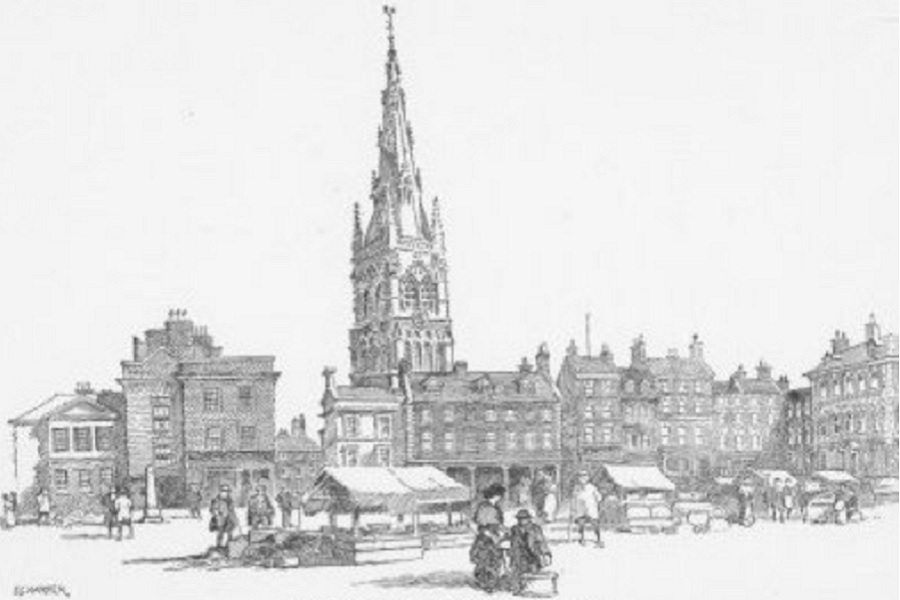

Cribb v Molineaux
The Cribb v Molineaux boxing match to decide the English title took place close to the Great North Road in 1811. It is claimed to have drawn a crowd of 20,000 to a field at Thistleton...
Gonerby Hill
Novelists of the 19th century ensured that Gonerby Hill became a firm part of Great North Road folklore. William Harrison Ainsworth, a fellow writer and friend of Dickens...
The Ram Jam Inn
The Ram Jam at Stretton grew from being a modest village inn to a Great North Road institution. Where did the "Ram Jam" name come from? And what's the link...
Aldborough – Isurium Brigantum
Aldborough is a small village 15 miles northwest of York, close to Boroughbridge where the Great North Road crosses the River Ure. In the Roman period it was...
Burghley House
The route of Ermine Street runs through the Burghley estate and remains a public footpath. The Great North Road ran alongside the estate as the road winds...
Ferrybridge Chariot Burial
A rare chariot burial was discovered in 2003 during the construction of the upgraded motorway intersection between the A1(M) Great North Road and the...
Margaret Tudor
Margaret Tudor was at the centre of relationships between England and Scotland. Aged 13 she made a triumphant journey to Edinburgh along the Great...
Markham Moor – Service Station
Few 20th century landmarks along the Great North Road are as distinctive as the concrete roofline of the former petrol filling station at Markham...
York Minster
York Minster history spans two millennia and provides direct linkage from Roman times to the present. Its history parallels that of the Great North Road...
The Eleanor Crosses
The Eleanor Crosses constructed in the 1290s to commemorate the passing of the queen were prominent landmarks alongside the Great North Road at Grantham...

